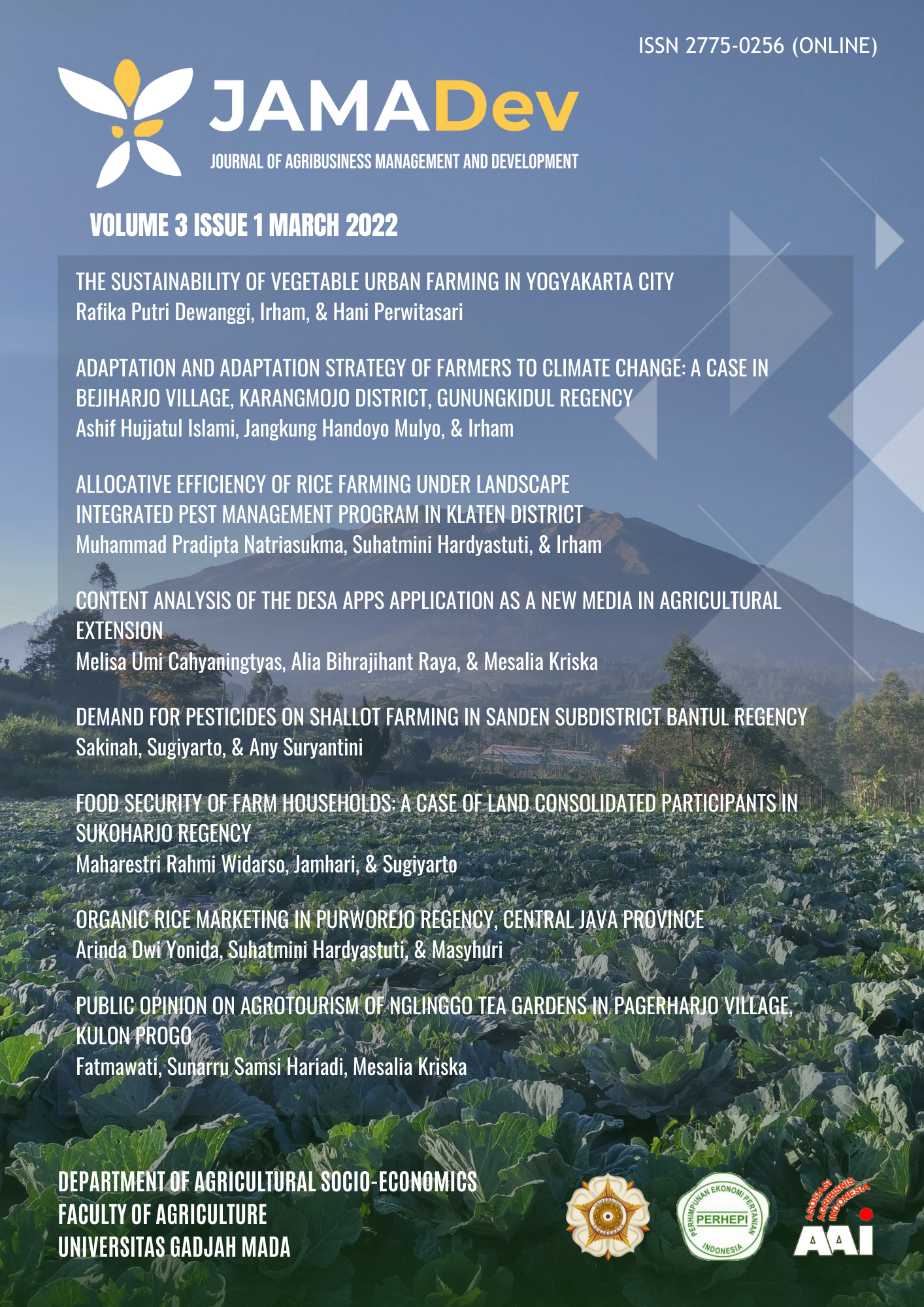Adaptation And Adaptation Strategy Of Farmers To Climate Change A Case In Bejiharjo Village, Karangmojo District, Gunungkidul Regency
Main Article Content
Abstract
In 2017, the village of Bejiharjo, Karangmojo District, Gunungkidul Regencywas flooded caused by one of the climate factors called La Nina. The farmland and a bridge that connecting the village had suffered damage. This study aims to determine perception, adaptation, and factors that influence farmers’ adaptation to climate change in Bejiharjo Village. The sample used were 32 farmers taken by using purposive sampling method. Farmers’ perception was measured by 2 indicators with Likert scale, namely perceived climate change variables and the impact of climate change on farming. Then, the farmers were grouped according to Strugers’ formula and analyzed with proportion test. Adaptation strategies were measured by calculating the number of adaptation strategies carried out by farmers. The factors that influence the adaptation of farmers were analyzed by using multiple linear regression analysis. The result of research showed that farmers in Bejiharjo had strong perception on climate change. There were 12 adaptation strategies carried out by farmers. The most widely practiced adaptation strategy was adjustment the planting period, which is done by 90.62% respondents. Farmers’ adaptation to climate change were positively influenced by the education of the household head, the number of productive household members, perception, and number of water irrigation sources. The factor that negatively affect the strategy was the contribution of farm income.

